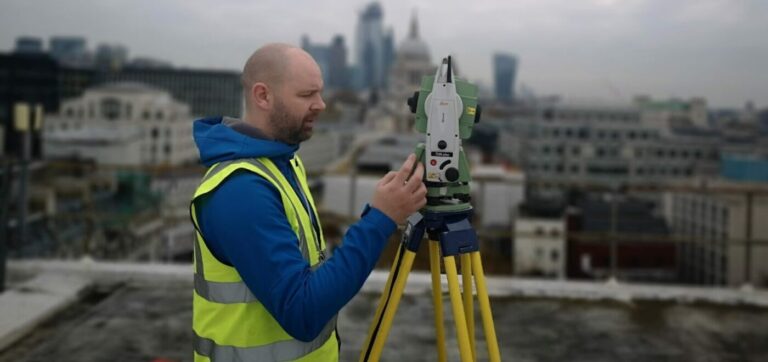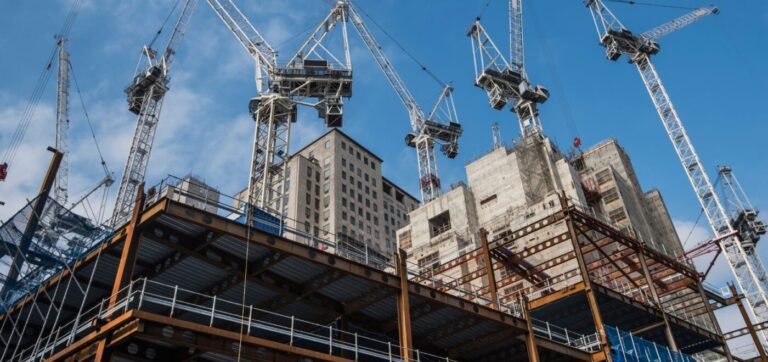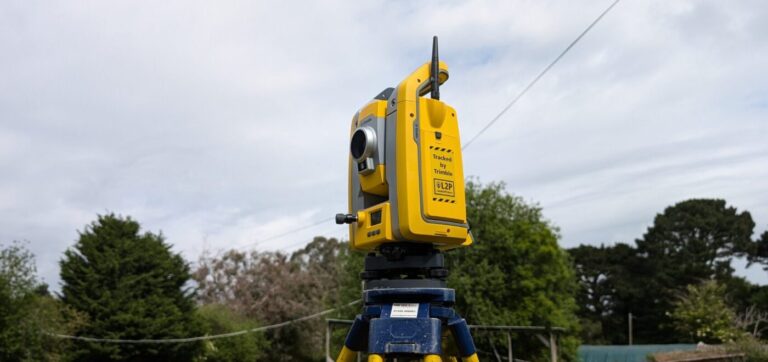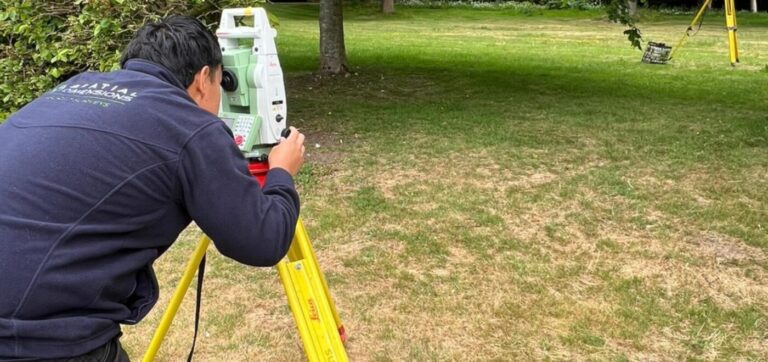Recent years have pushed AI into the public realm and its increased use shows no signs of stopping. AI apps like ChatGPT and Siri are now part of daily life but there is so much more to artificial intelligence than this.
In an ever-evolving world, technology continues to shape various industries, and surveying is no exception. Not only is AI revolutionising the way professionals design, construct, and manage infrastructure but also how we, as surveyors, carry out our work.
In this article, we will look at how artificial intelligence can help surveyors, our clients and existing examples
AI - HOW DID WE GET HERE?
AI, put simply, is a field combining computer software with data that helps enable problem-solving.
WAVE 1
Experts crafted algorithms and software based on their own knowledge. These systems followed logical rules and tackled well-defined problems, such as chess-playing computers and delivery optimisation software.
However, they faced limitations when confronted with new situations and struggled to adapt to uncertainty.
WAVE 2
Statistical learning, where engineers shifted from manual rule creation to developing statistical models. These models were trained on vast amounts of data to improve accuracy. Artificial neural networks emerged as a shining example of this wave, excelling in tasks like face recognition, speech transcription, and object identification. While they achieved impressive results, their inner workings were lacking a clear understanding of how they reached their conclusions.
WAVE 3
Marked by contextual adaptation, where AI systems can understand and respond to the context of a situation. This means that they can consider the specific circumstances, environment, and user preferences when making decisions and providing explanations for their actions. The focus has shifted towards building more sophisticated models capable of comprehending complex relationships and providing deeper insights from diverse data sources.
However, the development of these advanced systems requires extensive research and innovation.
WAVE 4
Today we find ourselves in a fourth wave of AI, with generative models like ChatGPT and large language models (LLMs) catalysing transformative advancements across various domains. AI is being applied across various domains. Natural Language Processing (NLP) allows virtual assistants like Siri and Alexa to respond to spoken or written commands, making interactions more intuitive. Image and video recognition enable automated tagging, content filtering, and visual search capabilities, benefiting areas like surveillance, self-driving cars, and social media platforms.
HOW CAN AI HELP MEASURED SURVEYS?
SPEED
One of the core pain points for our clients is speed. As a company, we pride ourselves on quick turnaround times and the use of AI will only enhance this. Current AI usage can analyse and process mass amounts of data quicker than traditional methods. Ultimately, the sooner our clients have their data, the quicker they can make informed decisions.
When it comes to on-site surveying, many feel AI-powered scanners are just around the corner. Whether this is automatic capturing of data or modelling, it will be exciting to see!
quicker they can make informed decisions.
When it comes to on-site surveying, many feel AI-powered scanners are just around the corner. Whether this is automatic capturing of data or modelling, it will be exciting to see!
CONTROL
AI can help surveyors with quality control. Artificial Intelligence can identify errors within data with less risk than manual processes. This increases the accuracy and reliability of survey results.
RESEARCH
AI can also be used as an integral part of research. At Spatial Dimensions, this can be used in a manner of areas. AI searches can provide more relevant information than search engines like Google as it understands the intent behind the query. As surveyors, we can format our AI to show industry-focused results and adapt words and phrases to match our needs.
WHAT ARE THE CONSTRAINTS OF AI FOR MEASURED SURVEYS?
It’s clear that AI in its current form has some limitations. The most obvious is a lack of human intuition and creativity.
AI algorithms are heavily reliant on the quality of data and training. Given that each site is different and unique scenarios are commonplace in surveying, we may anticipate this may cause issues down the road. Human judgment is part and parcel of the work we do at Spatial Dimensions, as we listen to your needs. Context and site-specific variations will undoubtedly require to human intervention.
The implementation of AI in surveying will (and does) require technical experts and resources. Barriers of entry like cost and lack of experts may initially cause problems and create monopolies.
For the moment, it’s clear which roles are necessary for humans and AI.
- IDENTIFYING DESIGN END GOALS
- ADVISING ON DESIGN CHOICES
- SHARING CONSTRUCTIVE FEEDBACK
- CREATING NEW CONCEPTS
- IMPROVING ON EXISTING CONCEPTS AND IDEAS
- REPETITIVE TASKS (ASSISTING ADMIN ETC.)
- CREATING DOCUMENTATION
- EXPERIENCE BASED SUGGESTIONS
- MANAGING COMPLEX FORMATS & DATA
- ASSISTING WORDED RESEARCH
IN PRACTICE
BIM
AI is currently making big steps in BIM. BIM machine learning algorithms can now be used to analyse the vast amounts of data generated. We can now gain insights and make projections that weren’t previously possible.
How is AI currently assisting BIM?
- Automating Tasks – BIM workflows like data entry, classification and documentation.
- Design Optimisation – Analyse large datasets and extract insights to assist with design processes.
- Quality Control – AI can analyse errors and inconsistencies ensuring accuracy.
- Predictive Analytics – Data and patterns helps predict future outcomes such as resource allocation.
DRONES
One of the most obvious examples of AI currently available is Drones. This has been revolutionary in many ways and allows the scanning of mass areas at incredible speeds. You can read more about our Drone surveying service here.
Drones equipped with AI technology can monitor construction sites, assess progress, and collect data for analysis. This streamlines the surveying process, providing accurate and up-to-date information.
By automating data collection, our industry can save time and resources while improving the accuracy of their assessments. The integration of AI and drones has transformed traditional surveying practices, providing faster, more efficient, and safer data collection methods. It enables professionals to make informed decisions based on accurate and comprehensive information. The significant majority of drone surveys being carried out are manned. However, the technology and resources are there and it’s a matter of time before AI drones are the preferred option.

WHAT'S NEXT?
It’s important to note AI usage in surveying is at its very conception. Its core uses are primarily around administrative and research-based work. However, the possibilities for its use in the future are very exciting. Whether you like it or loathe it, the more obvious use of AI in surveying is seemingly just around the corner!
This article, written by Jason Boyle, shows the potential for automated AI processes in just ten years from now in architecture. Many of the topics here directly correlate to our roles as surveyors. It’s certainly worth a read! – https://jason-boyle.medium.com/tomorrows-architect-unveiling-a-data-driven-vision-for-2034-9d522a8b291a
CONCLUSION
Within the AEC industry, we have an unparalleled opportunity to better the quality of our output at increasing speed. The power of AI is growing exponentially without signs of stopping. Naturally, there will be conversations about reduced workforces, increasing disparity between companies and barriers of entry to AI. As an industry, we must therefore hone AI for positive results.
Here at Spatial Dimensions, we have always been committed to innovation. Constantly seeking out any technology that enhances our services for the benefit of our clients. We are always investing time and capital into research and development of new technologies and AI is a continuation of this philosophy.
The use of AI can be either daunting or something to look forward to, depending on your opinion. Its introduction into surveying seemingly has only just begun. The size of the role is yet to be determined but one thing is certain, AI will be part of surveying and general life for the foreseeable future.





